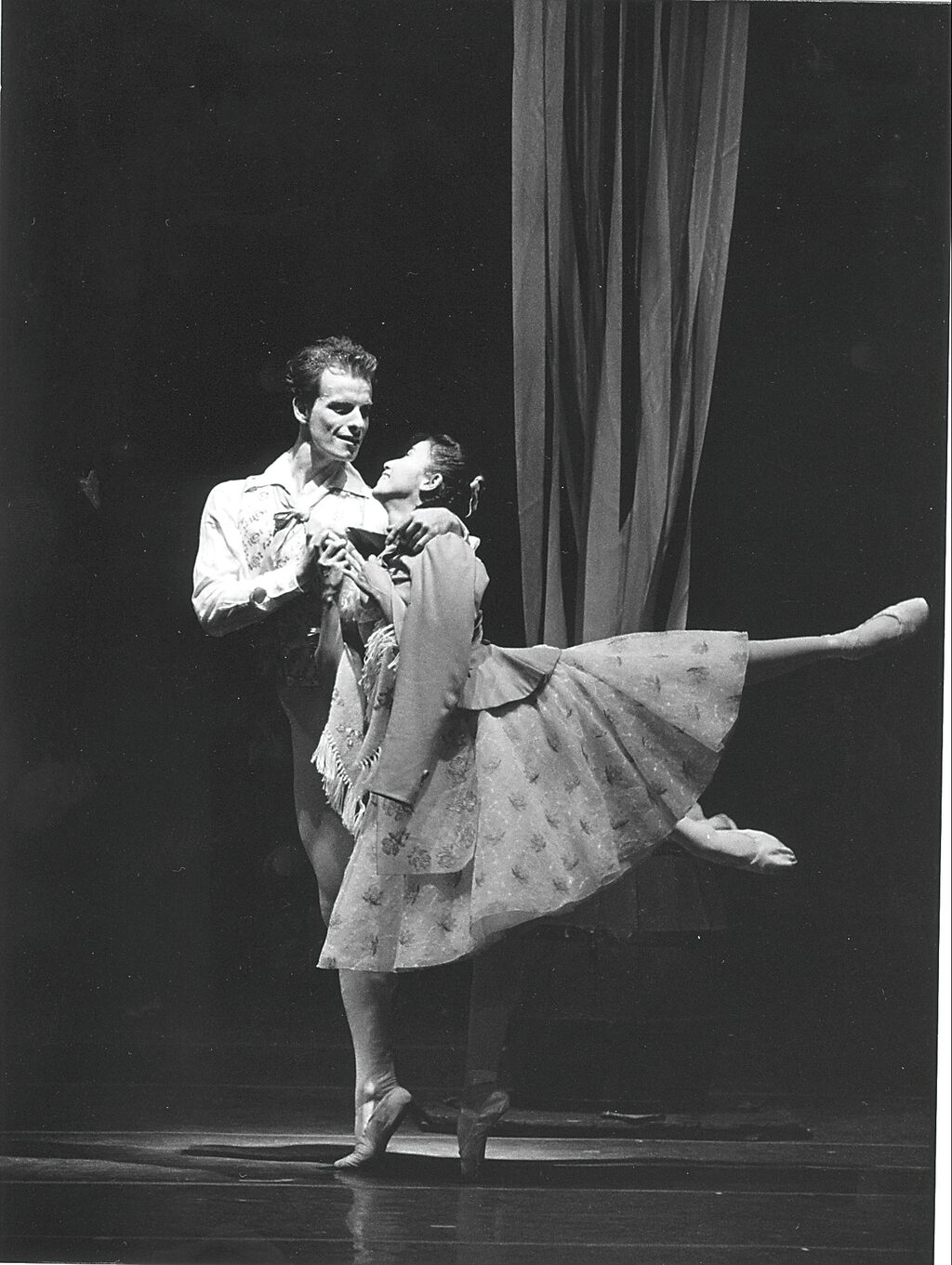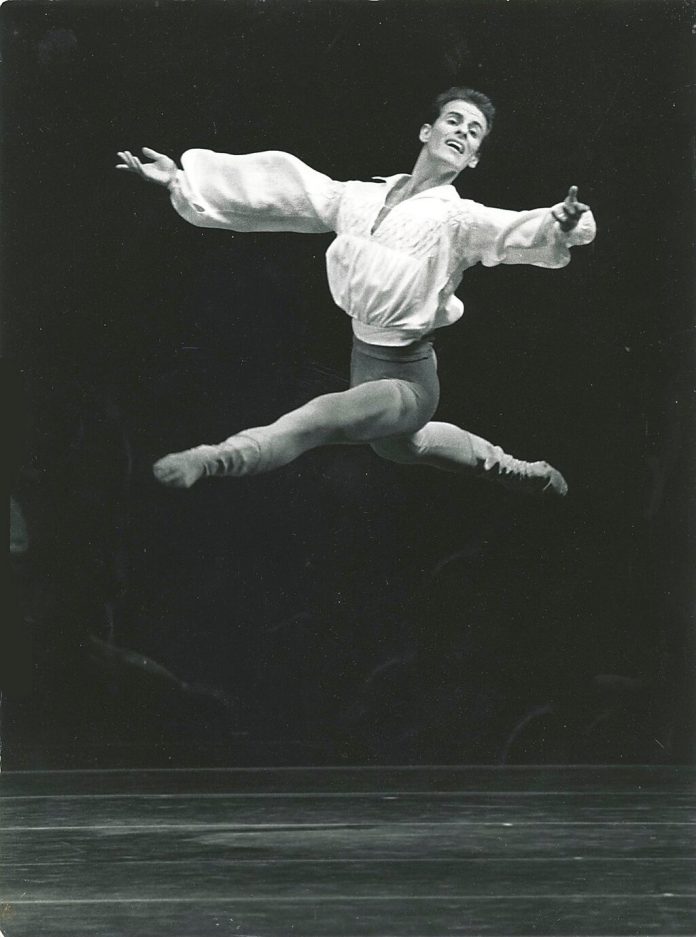ZAIDA GLIBANOVIC
By ZAIDA GLIBANOVIC
MOE might not be known for its high society and fine arts, but it was home to a world-class ballet dancer: Mark Pace. Much serendipity is what Mr Pace attributes to his lengthy career in the dance world, from studying one year at the Australian Ballet School to joining the Australian Ballet Company and then heading to Europe. Yallourn-born and Moe-raised Mark Pace reached a top standard of classical Ballet that very few dancers ever amount to. His mother, well-rehearsed in the importance of the arts, took her youngest children to the ballet to see shows very frequently in Melbourne, Mark Pace having an Australia Ballet subscription at one point. Mr Pace, with a name for staying on tempo, said he knew he was different from an early age. “I didn’t like the cricket ball, I didn’t like the football,” he said. Mr Pace began dancing at eight-years-old, starting his fundamentals with a smaller dance school Olga stretta before moving to the iconic Julie Ryan Dance School until he was 16. Mr Pace remembers how he was supported by many including Principal Brother Doug Walsh despite the bullying he faced while studying at St Pauls in Traralgon. Mr Pace recalled the stigma he faced as a gay man who danced in a rural town. “I didn’t have a lot of peers because I was into ballet, and I wasn’t very accepted at school even though I was at St Pauls,” Mr Pace said. “I was very lucky I had parents who let me do ballet, a lot of parents don’t let their sons do ballet because there is a lot of stigma attached; there were never any conditions attached to my parents, they let us do what we wanted. “Financially of course, it was difficult – my father worked at the SEC, my mother was a nurse. “I was fortunate in how I was always supported by the people I needed. By my ballet teacher, by my parents and by the school, it was important.” Despite the constant bullying and harassment, Mr Pace was never deterred from his dreams of dancing on the big stage. “The bus was always the worst part of going up and down and that’s where most of the bullying would happen without teachers, and there was one time I was being spat at by half the bus.” “I didn’t like school mainly because of bullying.” Being at a catholic boys’ school, some teachers weren’t so supportive of Mr Pace. At 15, Mr Pace auditioned for the Australian Ballet School to be turned away and told to work on technique. Needing a male teacher, Mr Pace went to the National Theatre Ballet School, with Gailene Stock at the helm; there he studied with Australian Ballet Company dancers Gary Norman, Eileen Tasker and Martin Rubenstein. In a busy schedule for a 15-year-old boy, Pace would train with the National Theatre on weekends in Melbourne while still studying at Julie Ryan’s after school. “I would only go on a Friday and the school (St Pauls) would let me go on a Friday morning so I would get on the train myself and go down to St Kilda,” he said. For Mr Pace, it was like muscle memory as he made that trip to St Kilda multiple times a year to watch the Australian Ballet. Returning to the Australian Ballet School with better technique and maturity, Mr Pace was accepted at 16. “Walking into the ballet school, I felt relieved that all that (bullying) was behind me,” he said. Mr Pace soon went on to join the Australian Ballet Company at 17-years-old as an extra in Coppélia; due to a series of injuries, Pace was asked to stay on with the company. The Australian Ballet at that time consisted of 60 dancers and performed up to 180 times a year, which was taxing on performers, resulting in many injuries but giving a lot of opportunity for Mr Pace. The company took on Mr Pace only one year into his studies at the Australian Ballet School, which Mr Pace said was one of the luckiest things to have happened to him that launched his career. Mr Pace spent five years at the Australian Ballet Company, where he was promoted to soloist. Promoted to soloist during the 1988 European tour, after dancing Florestan Pas de Trois and Bluebird Pas de Deux from Maina’s Sleeping Beauty at Convent Garden during the London season. Mr Pace recalled the tour in delight as he was promoted during the season, but also because of performing around the Soviet Union in St Petersburg, Moscow (both now part of the Russian Federation) and Odessa (now in Ukraine) with the tour finishing at Covent Garden. Sadly, shortly after returning from this tour, Mr Pace became injured, spending nearly eight months out of action. After injury, Mr Pace returned to work on Lenski from John Cranko’s Onegin with Anne Wooliams. Mr Pace met the love of his life, Bertrand d’At, a French choreographer and ballet director who had come to Australia to produce the Berlin Béjart’s company ‘Le Concours’. Mr Pace described d’At as a cultured and reserved man, but felt an instant connection to him – so much so that Mr Pace left the Australian Ballet Company, his family and his life in Australia and followed d’At to Europe. On a whim and with some more luck, Mr Pace was accepted into the Béjart Company in Lausanne after the male soloist suffered an injury. “We were together 25 years very happily … and then marriage for all happened, so we decided to get married, and we decided to do a big fabulous wedding,” he said. “Sadly, he passed away three days before our wedding of an Aortic aneurysm. “It was very much a surreal moment as all the family was there; it was meant to be a wedding, and then it was a funeral.” In France, there exists a law that lets you marry after death under extraordinary circumstances. Only the president of France can give permission, and in January 2016, Mr Pace received it. So they were finally married. The date on the wedding certificate is dated the day before d’At died, July 1, 2014. “I learnt a lot from him, a lot about music, a lot about culture, a lot about dance and that, of course, is still with me,” Mr Pace said. Mr Pace also went on to dance in other major productions with Bayerischer Staatsballet and the Ballet de l’Opéra National du Rhin, which took Mr Pace across Asia to perform. By the age of 40, Mr Pace decided to hang the point shoes up after too many injuries, and by 2007 he officially retired. Looking back at such a decorated career, Mr Pace said the absolute highlight amongst many would have been performing and singing ‘God Save the Queen’ in front of Queen Elizabeth II herself in 1988. “It was a very poignant moment for me,” he said. Currently the lead classical ballet teacher at the Conservatoire of Lille, France, Mr Pace is pursuing a PhD at the University of Edinburgh with a keen research interest in dancer development, resilience and dance science. After an over 30-year-long career, Mr Pace aims to provide dancers and educators with the tools to become better artists with critical thinking yet curious minds. Though living in France, Mr Pace is still active in the community, visiting the Latrobe Valley frequently. Having had various teaching roles at Julie Ryan’s Dance School, Mr Pace had even been the adjudicator in the Moe Dance Eisteddfod just last month. Reflecting on his life, Mr Pace said he owed his success to the support he received over his life. “I think that base of having that support from the school and ballet teachers, my parents and my family; I was one of six, and they all supported me they were always very proud of me, and I think that is very important as research says if you don’t have that support, you’re not going to make it,” he said.














